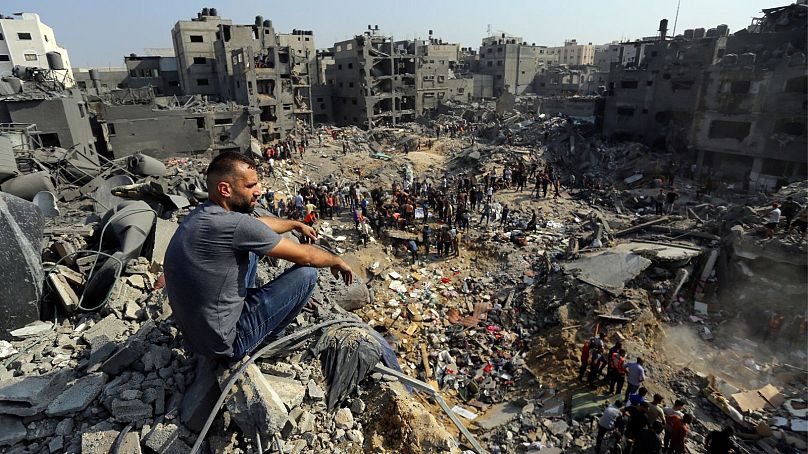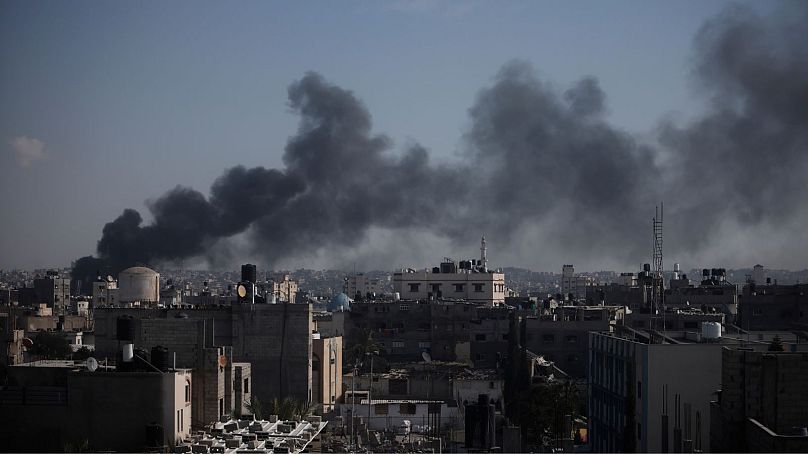- Home >
- Our Actions >
- World report
2
Comments
Ecocide in Gaza: The environmental impact of Israel's war |
|---|
|
by Renuka Raut | 27-06-2024 15:42
|
|
In the place of orchards, sandy beaches, and strawberry fields that were once the pride of Gazans, the coastal territory is now a dystopian landscape of military bases, craters and ruins. When the Israeli offensive in Gaza entered its eight month, more than 34,000 Gazans have been killed and 77,000 wounded. With more than half of the population on the brink of starvation, the destruction of Gaza’s environment and food production capabilities is both an immediate concern and one with catastrophic long-term consequences. The UN is investigating the environmental impact of the ware in Gaza:
The United Nations is investigating the environmental impact of the war in Gaza, which has caused a catastrophic spike in land, soil and water pollution. It is hard to know where to begin, since the conflict has no end in sight. More than 30,000 Palestinians have been killed by relentless Israeli strikes since 7 October, when Hamas-led militants killed around 1,200 Israelis and took 250 people hostage. Significant water, air, and soil pollution: From the sky to the sea, from the earth to the groundwater, Gaza has been contaminated for many years, even generations, experts say. The greenhouse gas emissions generated during the first two months of the war in Gaza were greater than the annual carbon footprint of more than 20 of the worlds most climate-vulnerable nations, according to a British-American study. It estimates that the climate cost of the first 60 days of Israel’s war is equivalent to burning at least 150,000 tons of coal. Water pollution in Gaza: Since the escalation of the conflict in October, waste management facilities have been damaged or destroyed, and power has been cut or interrupted. UNEP estimates that at least 100,000 cubic meters of sewage and wastewater are being dumped daily onto land or onto the Mediterranean Sea. Historical marine pollution incidents in Gaza have led to high concentration of chlorophyll and suspended organic matter in coastal waters, and gastrointestinal parasites: this conflict is likely increasing these issues, the UNEP spokesperson says. Meanwhile solid waste is being dumped in informal sites, where hazardous substances can leach into the porous soil, and potentially into the aquifer – Gaza’s main source of water. Drinking water shortages were already a major concern for families, save the Children says due to the 16-year land, sea and air blockade imposed by Israel, which limited the development of water and sanitation infrastructure. The current crisis in Gaza is both a violent conflict, and a slow-burning eradication of children’s rights, fuelled by international neglect, a failure of leadership, and the climate crisis, the charity’s Advocacy and Resource Mobilization Director Mohamad AI Asmar said during the COP28 climate summit in December. “The over a million children with their lives on the line in Gaza were already on the frontline of the climate crisis. If you are a child in Gaza, you will have no memory of a life without water shortages, created by political action – the blockade – and inaction – on climate change.” Debris pollution in Gaza: Debris and hazardous waste are also a major concern, says UNEP. As of 7 January, the organisation estimated that the total quantity of debris amounted to 22.9 million tonnes – a figure that will have increased significantly in the weeks since. “This is an extremely large amount of debris, especially for such small area,” Air pollution Gaza:
On top of solid waste poisoning Palestinians soil and water, UNEP outlines the danger of solid waste burning in open fires which releases a range of hazardous gases and particulate pollutants into the air. “Looking ahead,” the UNEP spokesperson concludes, “it will be important to investigate other conflict-related sources of contamination, including from munitions debris, by products of the use of munitions and subsequent fires, unexploded ordnance and possible further degradation and contamination of land and groundwater. ” People in Gaza will not be the only ones to suffer from this rise in air pollution. 281,000 tonnes of planet-warming gases were releases in the first 60 days of the war, according to analysis by UK and US researchers released earlier this year. That’s equivalent to burning at least 150,000 tonnes of coal; with 99 percent of the pollution attributable to Israel’s aerial bombardment and ground invasion of Gaza. Reference:
|
|
|











 Youth
Renuka Raut
Youth
Renuka Raut 
 Previous : Sustainability and Biodiversit...
Previous : Sustainability and Biodiversit...









2 Comments
The environmental crisis in Gaza is indeed dire. Appreciation to the UN for investigating this impact!
Posted 07-07-2024 13:08
Hello, this is mentor Seeun.
Great report on the pollution of Gaza.
It was interesting to read about how the UN is reacting to such incidents.
Thank you for your repot.
Posted 01-07-2024 02:17